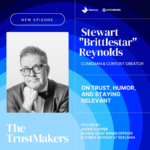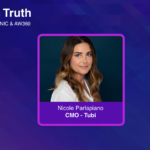By Dan Slivjanovski, Chief Marketing Officer, DoubleVerify
We’re continuing to see bold claims about “new tech solutions” that promise to resolve the so-called challenges of “legacy verification,” with some even predicting the end of established players in the space. In reality, though, many of these solutions fall short on critical fronts like ubiquity, scale, accuracy, efficacy, and service. For any verification technology to truly protect brands, it must meet these rigorous standards, or else it puts advertisers at risk.
Let’s break down why these five pillars — ubiquity, scale, accuracy, efficacy, and service — are non-negotiable for effective verification, and why new solutions will be challenged to measure up.
1. Ubiquity: Verification Across Every Channel
Today’s digital landscape spans numerous platforms, including open web, social media, CTV, and mobile apps. A reliable verification solution must work seamlessly across all of these channels, whether open or closed, ensuring consistent standards and working to eliminate gaps. Brands can’t afford to be selective about where they are safe — they need to be protected everywhere their ads appear and, preferably, through a unified platform. When assessing verification solutions, it’s essential to look for ones that integrate with all major ad-buying platforms, providing continuous coverage wherever ads run.
2. Scale: Ensuring Comprehensive Coverage
Ad verification isn’t something you can apply selectively or in limited markets. For large multinational advertisers, verification must protect billions of impressions across countless countries, regions, and languages. Without massive scale, these tools can’t deliver the comprehensive coverage that Fortune 500 brands require. Solutions that only operate in limited markets or that lack multilingual support fall short of providing true protection. Advertisers need verification partners with infrastructure that can handle this global scope, ensuring that safety and suitability standards are upheld everywhere and consistently.
3. Accuracy: Employing Advanced Technology
Achieving accuracy in ad verification demands sophisticated, continuous investment in AI and machine learning to ensure consistent, precise classification across all media types. Leading solutions leverage advanced technologies such as computer vision (CV), optical character recognition (OCR), audio analysis, natural language processing (NLP), and sentiment analysis — enabling a nuanced understanding of content that goes far beyond primitive keyword scanning. This depth is especially critical for video, where accurate interpretation of sight, sound, and motion is essential. Leading measurement providers, with their specialized resources and expertise, are uniquely positioned to continue driving this work forward.
4. Efficacy: Verified by Independent Standards
Verification must be more than just a checkbox — it needs to be validated by credible, independent third parties. Without third-party accreditation from neutral groups like the MRC, advertisers have no objective way to judge the efficacy of a solution. Reputable verification providers undergo rigorous reviews and maintain third-party certifications, ensuring they meet industry-wide standards and aren’t self-assessing. These are not rubber stamps and require exhaustive work on a vendor’s end to meet the necessary criteria to be evaluated and satisfy expectations. This includes proprietary platforms, where the narrative about the lack of independence and accuracy for third party measurement is patently false, undermining the years of work and rigorous external validation that has gone into developing viable solutions. In a market crowded with emerging tools claiming high efficacy, third-party accreditation is the difference between legitimate, trusted verification and untested shallow promises.
5. Service: The Backbone of Suitability
Even the most technically sound solution is incomplete without strong support. Verification should be backed by a dedicated, global support team that is available around the clock. With a 24/7 support structure, verification providers can quickly address issues, respond to local market needs, and troubleshoot problems in real time. A solution that lacks robust service is unlikely to be responsive when brands need it most, especially during crises, dynamic media cycles, or unexpected ad placement issues at scale. Brand suitability technology is always being pressure tested and having support on hand is critical.
The Bottom Line
Trade narratives may be filled with ambitious claims and promises of the next big thing in verification, but advertisers should approach with caution. While new technologies are important, they must meet the rigorous demands of ubiquity, scale, accuracy, efficacy, and service to be viable in the long term. Verification isn’t about quick fixes or gimmicks — it’s about ensuring that media quality and effectiveness are upheld at every level, across every platform, and around the clock. By prioritizing partners who meet these essential criteria, advertisers can protect their brands effectively and maintain trust in a complex digital landscape.











